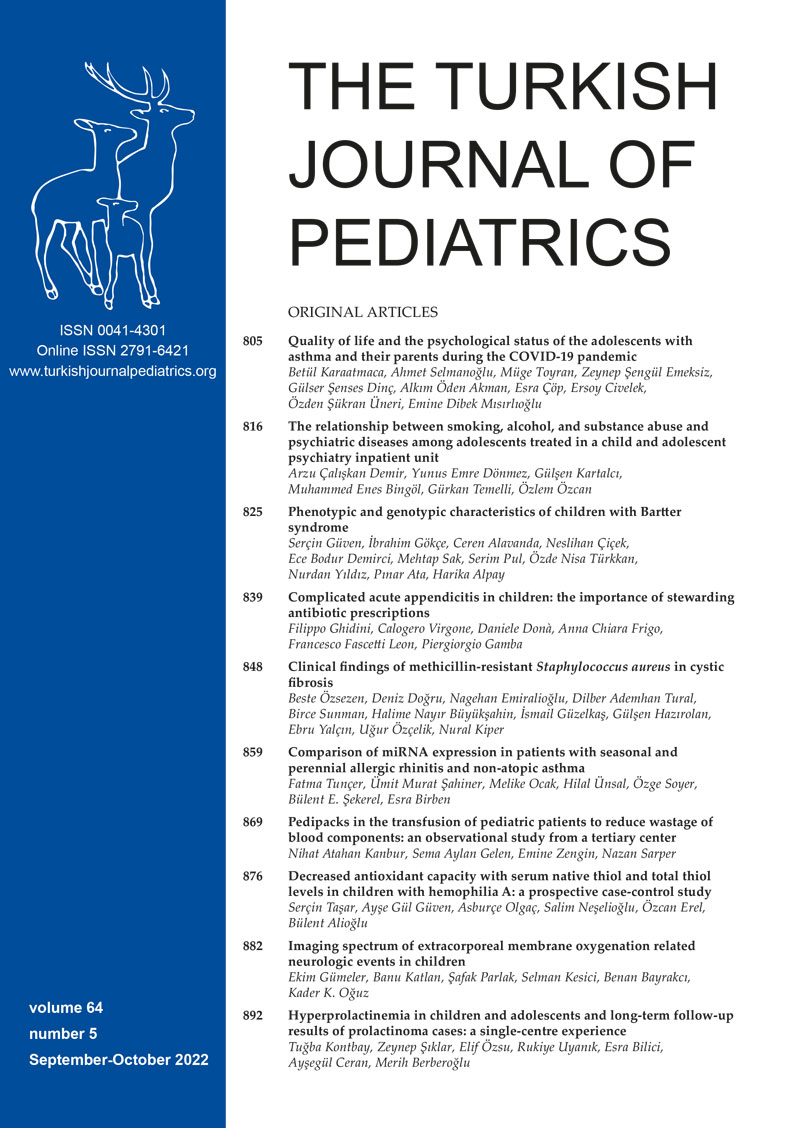Abstract
Background. Methicillin-resistant Staphylococcus aureus (MRSA) rates have increased in cystic fibrosis (CF) patients.This study aimed to determine the rate of MRSA, define risk factors, and clarify the effect of MRSA on pulmonary functions, annual pulmonary exacerbation (aPEx) in children with MRSA positive CF.
Methods. This was a retrospective case control study. CF patients who had ≥1 MRSA (+) respiratory culture between September 2016-2019 were included. MRSA growth rate, colonization status, clinical characteristics, hospitalization rates, FEV1 %predicted, and z-score one year prior to the MRSA isolation, at MRSA growth and one year after MRSA growth were recorded. The aPEx rate changes before-after MRSA growth were evaluated.
Results. Sixty-one subjects who had ≥1MRSA growth and 66 controls were enrolled. There was no statistically significant difference between the spirometry indices at first, and 12th month after MRSA acquisition. The mean aPEx was 0.6 one year prior to MRSA acquisition and this rate significantly increased to 1.2 one year after MRSA growth(p < 0.05). The mean hospitalization rate before and after one year of MRSA acquisition significantly increased from 0.17(±0.12) to 0.48 (±0.3)(p:0.008) admissions per year.
Conclusions. MRSA growth was related to increased aPEx. Increased aPEx and hospitalization rates after MRSA acquisition suggest MRSA should be eradicated when detected.
Keywords: colonization, cystic fibrosis, methicillin resistant Staphylococcus aureus, pulmonary exacerbation, treatment
Copyright and license
Copyright © 2022 The Author(s). This is an open access article distributed under the Creative Commons Attribution License (CC BY), which permits unrestricted use, distribution, and reproduction in any medium or format, provided the original work is properly cited.














